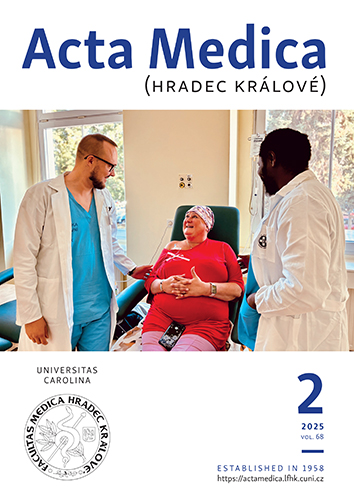ACTA MEDICA, Vol 60 No 3 (2017), 97–107
Computer-Assisted versus Oral-and-Written History Taking for the Prevention and Management of Cardiovascular Disease: a Systematic Review of the Literature
Yannis Pappas, Shoba Poduval, Jitka Všetečková, Josip Car
DOI: https://doi.org/10.14712/18059694.2018.1
published online: 05. 02. 2018
abstract
Background and objectives: CVD is an important global healthcare issue; it is the leading cause of global mortality, with an increasing incidence identified in both developed and developing countries. It is also an extremely costly disease for healthcare systems unless managed effectively. In this review we aimed to: – Assess the effect of computer-assisted versus oral-and-written history taking on the quality of collected information for the prevention and management of CVD. – Assess the effect of computer-assisted versus oral-and-written history taking on the prevention and management of CVD. Methods: A systematic review of randomised controlled trials that included participants of 16 years or older at the beginning of the study, who were at risk of CVD (prevention) or were either previously diagnosed with CVD (management). We searched all major databases. We assessed risk of bias using the Cochrane Collaboration tool. Results: Two studies met the inclusion criteria. One comparing the two methods of history-taking for the prevention of cardiovascular disease n = 75. The study shows that generally the patients in the experimental group underwent more laboratory procedures, had more biomarker readings recorded and/or were given (or had reviewed), more dietary changes than the control group. The other study compares the two methods of history-taking for the management of cardiovascular disease (n = 479). The study showed that the computerized decision aid appears to increase the proportion of patients who responded to invitations to discuss CVD prevention with their doctor. The Computer- Assisted History Taking Systems (CAHTS) increased the proportion of patients who discussed CHD risk reduction with their doctor from 24% to 40% and increased the proportion who had a specific plan to reduce their risk from 24% to 37%. Discussion: With only one study meeting the inclusion criteria, for prevention of CVD and one study for management of CVD we did not gather sufficient evidence to address all of the objectives of the review. We were unable to report on most of the secondary patient outcomes in our protocol. Conclusions: We tentatively conclude that CAHTS can provide individually-tailored information about CVD prevention. However, further primary studies are needed to confirm these findings. We cannot draw any conclusions in relation to any other clinical outcomes at this stage. There is a need to develop an evidence base to support the effective development and use of CAHTS in this area of practice. In the absence of evidence on effectiveness, the implementation of computer-assisted history taking may only rely on the clinicians’ tacit knowledge, published monographs and viewpoint articles.
keywords: history-taking; computer; cardiovascular disease; CVD; prevention; management

Computer-Assisted versus Oral-and-Written History Taking for the Prevention and Management of Cardiovascular Disease: a Systematic Review of the Literature is licensed under a Creative Commons Attribution 4.0 International License.
210 x 297 mm
periodicity: 4 x per year
print price: 150 czk
ISSN: 1211-4286
E-ISSN: 1805-9694
